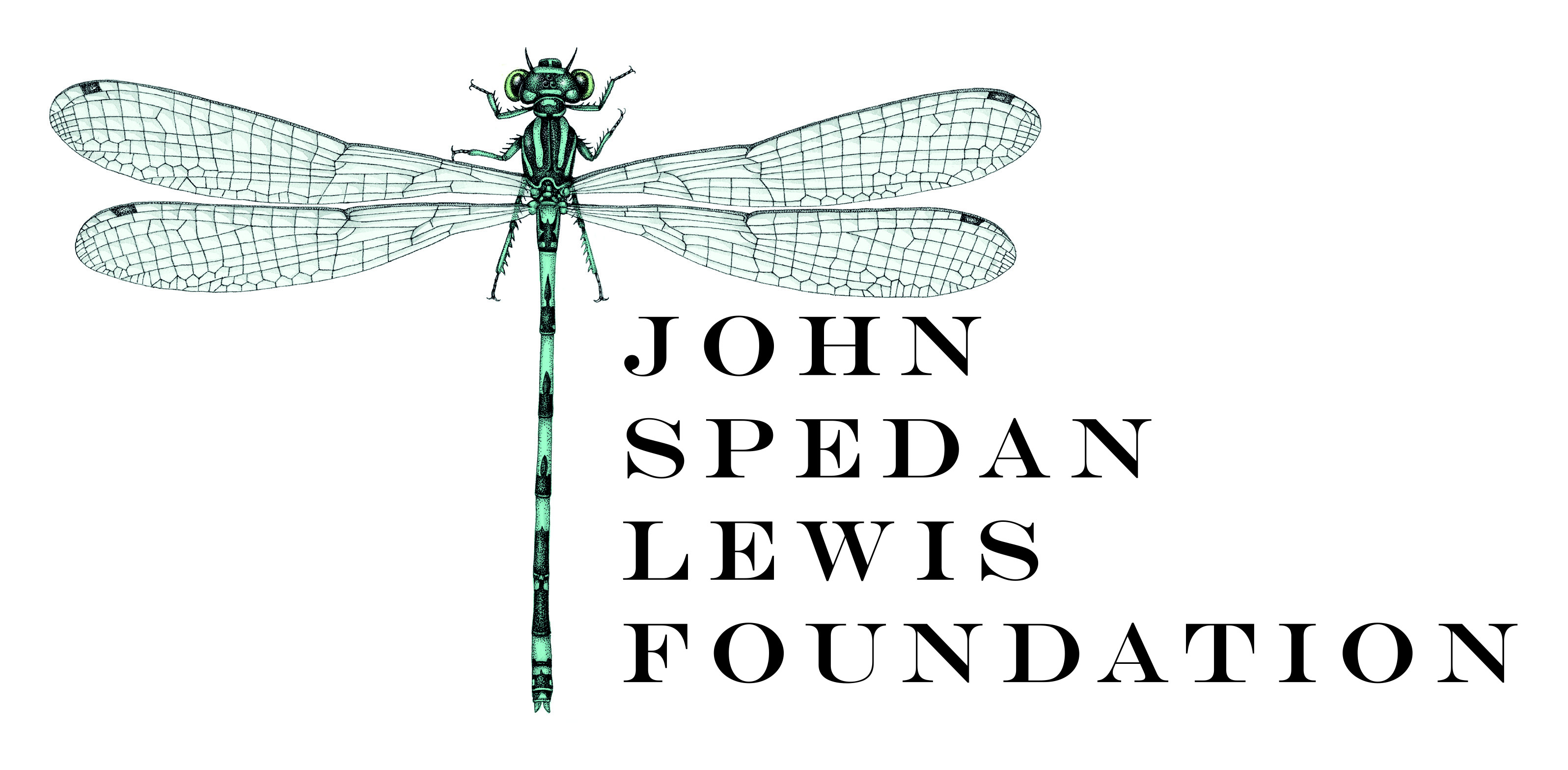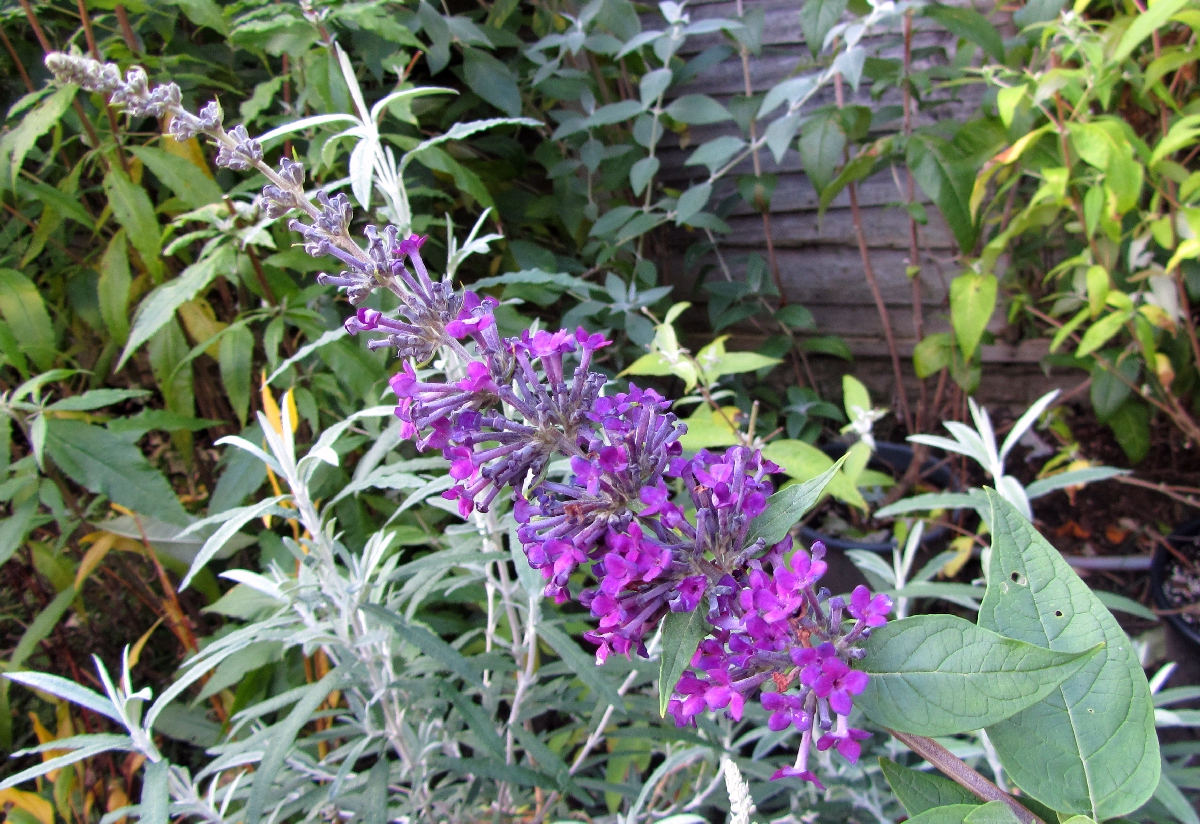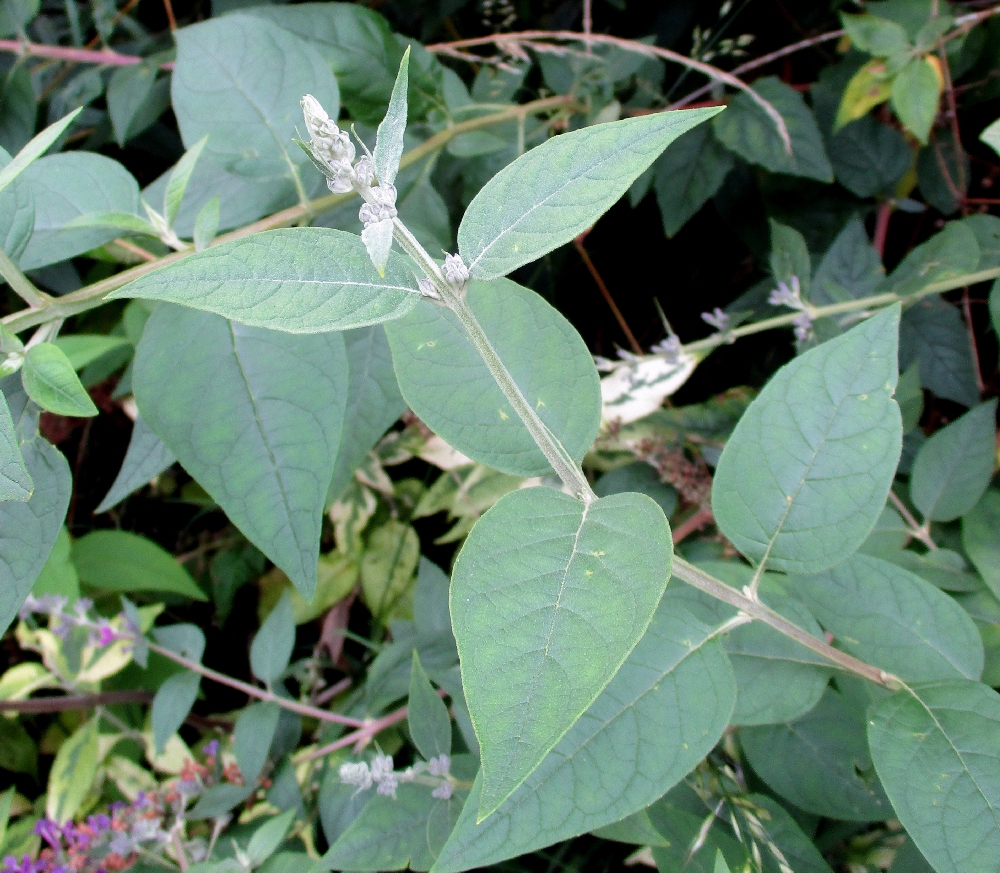Buddleja crispa × lindleyana
Sponsor
Kindly sponsored by
The John Spedan Lewis Foundation

Credits
Andrew Large (2021)
Recommended citation
Large, A.T. (2021), 'Buddleja crispa × lindleyana' from the website Trees and Shrubs Online (treesandshrubsonline.
Genus
Synonyms
Infraspecifics
Other taxa in genus
- Buddleja albiflora
- Buddleja alternifolia
- Buddleja araucana
- Buddleja asiatica
- Buddleja auriculata
- Buddleja caryopteridifolia
- Buddleja colvilei
- Buddleja cordata
- Buddleja crispa
- Buddleja curviflora
- Buddleja davidii
- Buddleja delavayi
- Buddleja fallowiana
- Buddleja fallowiana × davidii
- Buddleja FLUTTERBY™ Series
- Buddleja forrestii
- Buddleja globosa
- Buddleja glomerata
- Buddleja japonica
- Buddleja lindleyana
- Buddleja LO AND BEHOLD® Series
- Buddleja longiflora
- Buddleja loricata
- Buddleja × luteolufaucia
- Buddleja macrostachya
- Buddleja marrubiifolia
- Buddleja megalocephala
- Buddleja 'Miss Ruby'
- Buddleja 'Morning Mist'
- Buddleja myriantha
- Buddleja New Dwarf Hybrids
- Buddleja nivea
- Buddleja officinalis
- Buddleja 'Orange Sceptre'
- Buddleja paniculata
- Buddleja × pikei
- Buddleja 'Pink Delight'
- Buddleja saligna
- Buddleja 'Salmon Spheres'
- Buddleja salviifolia
- Buddleja 'Silver Frost'
- Buddleja speciosissima
- Buddleja 'Summer Beauty'
- Buddleja virgata
- Buddleja × wardii
- Buddleja × weyeriana
- Buddleja × weyeriana Hybrids
- Buddleja 'Winter Sun'
Hybrids from crossing Buddleja crispa and B. lindleyana. Shrubs 1–3 m; branchlets quadrangular to sub-quadrangular, narrowly winged, tomentulose Leaves with petiole 1–7 mm long; leaf blade elliptic to ovate, 4–14 × 2–5 cm; upper surface dull green, sparsely pubescent, glabrescent, underside pale, tomentose; base rounded to cordate, apex acuminate, margin entire to minutely dentate, conspicuous lateral veins on underside. Inflorescences terminal, thyrsoid, 10–30 × 5–10 cm, with leafy lower bracts up to 15 mm in length. Calyx campanulate, 2–4 mm, outside densely pubescent. Corolla purple, 1.3–2 cm; tube almost cylindrical 1.1–1.7 cm long, mostly straight or only very slightly curved, outside pubescent with glandular hairs; lobes sub-orbicular, 4–6 × 3–5 mm. Stamens sessile, 1–2 mm long, inserted at or near middle of corolla tube. Ovary ovoid, 1.5–2.2 mm long, tomentose on upper half. Mostly sterile; capsules and seeds not seen. (Pers. obs.).
Habitat Garden origin
USDA Hardiness Zone 7b-9
RHS Hardiness Rating H5
Most familiar as the cultivars ‘Hever Pride’ and ‘Longstock Pride’, hybrids of this type are deciduous shrubs, reaching a height of approximately 2 metres with a similar spread if regularly pruned. The branches have pale-brown, fissured and peeling bark. The leaves are dark green and relatively small for the size of the plants. Overall these forms more closely resemble B. lindleyana than B. crispa (summer-flowering form), although the leaves, branchlets and flowers are more pubescent, but less conspicuously so than B. crispa. The corolla tubes are long and do not have the significant bend found in B. lindleyana.
The flowers appear in late summer and continue into autumn. The thyrsoid inflorescence is similar in shape to B. davidii, initially upright and sometimes becoming lax as the flowers develop. The colour is a bright purple, without a differently coloured eye. The flowers do not usually develop into seed capsules, so the shrub will flower more or less continuously into autumn without deadheading. The plant may be considered seed-sterile and non-invasive. It can be pruned in the spring in a similar way to other summer flowering species and hybrids, and will regenerate well following hard-pruning (pers. obs.).
'Hever Pride'
Synonyms / alternative names
Buddleja 'Pride of Hever'
‘Hever Pride’ originated from the gardens of Hever Castle, Kent, UK c. 1958, and is listed by Leeuwenberg (1979) under artificial hybrids. It has not appeared in the horticultural literature. This cultivar is now very rare in cultivation, and should not be confused with B. × pikei ‘Hever’ (syn. ‘Hever Castle’) (Stuart 2006).
'Longstock Pride'
Synonyms / alternative names
Buddleja 'Pride of Longstock'
A hybrid raised by Peter Moore of Longstock Nursery, Hampshire, UK in 1999, sharing the same parentage as ‘Hever Pride’. ‘Longstock Pride’ is an upright shrub, height and spread 2 metres, with foliage and a form very similar to B. lindleyana. The flowers are lightly scented, purple and arranged long pointed panicles, which can be either upright or arching. Generally, it flowers continuously from late summer until the first frosts. The plant is almost completely seed- and pollen-infertile. Mature specimens benefit from hard pruning in the spring. ‘Longstock Pride’ is widely available in the UK, but is not yet well known elsewhere (Moore 2020).


